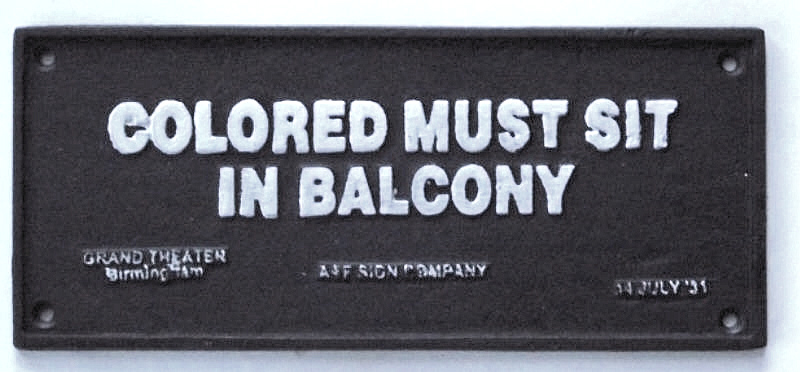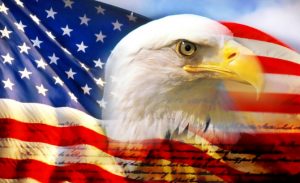
Views: 673
The American Civil War
The American Civil War (1861−1865) was a military conflict between the northern and the southern states of the USA which initially started as a political-economic revolt and desire for the independence by the southern states which created their own Confederacy not recognized by Washington. However, very soon the conflict was transformed into the war for the abolition of the slavery within the whole territory of the USA. In the first half of the 19th century, there was an increasing number of personalities mostly from the industrial northern states who called for the abolition of the slavery but the more agricultural southern states wanted the right for each state to decide whether to keep the slavery or not. The South as well as wanted individual states to have more power in their hands than the US’ federal government allowed and, therefore, the southern states became secessionists as they believe that the southern states should finally secede from the Union. As a result, eleven southern states created the independent Confederacy (the Confederate States of America) with Jefferson Davis as its President with the capital in Richmond (Virginia).

After the battle of Gettysburg in 1863, the Union’s President Abraham Lincoln made his famous „Gettysburg Address“ about democracy and late in the same year issued the „Emancipation Proclamation“ which made slavery illegal. After the war, which won the Union, it was thought that emancipation policy as well won within the whole country and that, therefore, the policy of segregation, apartheid, and discrimination of African American is finally over. However, many Southerners still had very bad feelings towards the North and did not want to end slavery and to stop with the discriminatory policy. Subsequently, it is now the fundamental question when in reality the ideas of emancipation, civil rights, democracy, and integration finally won in American society. Not for sure in 1865 but only a whole century later, even after the WWII, in the mid-1960s with the Civil Rights Movement. In other words, a whole century after the American Civil War ended the segregation, apartheid, disintegration, and discrimination on the racial bases were still in a practice in many (southern) states of the USA – something that was not imaginable in Europe even in its eastern „not democratic“ part of the countries of „Real Socialism“.
The Civil Rights Movement
The US’ Civil Rights Movement was the national campaign by African Americans fighting for equal rights with the whites and for the cancellation of de facto existing apartheid in the southern states even hundred years after the end of the Civil War. The movement was especially strong and influential in the 1950s and the 1960s. Their campaigns included economic boycotts (refusal to buy particular products), the political actions of Freedom Riders, and, particularly spectacular, a March to Washington led by Martin Luther King (1929−1968) in August 1963 (250.000 people) when he made his famous „I Have a Dream“ speech at the Lincoln Memorial. That was his personal vision of the USA as a society of equal rights. Ultimately, the Movement succeeded in causing the introduction of affirmative laws as there were the 1964 Civil Rights Act and the 1965 Voting Rights Act. These two affirmative acts changed the attitudes of many white Americans and, basically, ended the Civil War concerning the full social and political affirmation of African Americans.
The affirmative laws were followed by the affirmative action initiated as the US’ government policy by the US’ President Johnson in 1965 when he created the Office of Federal Contract Compliance and the Equal Employment Opportunity Commission. Through these bureaus, affirmative action was designed to reduce social and racial inequalities in the US’ society by requiring all federal government contractors and public institutions to give consideration to racial minorities (and from 1971 to women).
The Movement became inspired by the case of Rosa Parks, who had defied a rule of segregation on the bus system in Montgomery (Alabama) when in December 1955 because of that she was arrested. The case caused a year-boycott of the entire system but further boycotts followed during the late 1950s and early 1960s. These boycotts became galvanized by Martin Luther King, who was a co-founder of the Southern Christian Leadership Conference and the Student Non-Violent Co-ordinating Committee. The charisma of Martin Luther King very much empowered the Civil Rights Movement through religion. At the beginning of the 1960s, there were students’ actions forcing desegregation of lunch counters, cinemas, supermarkets, libraries, and many other public facilities.
One of the most important successes of the Movement was the practice to publically and officially use a term „African American“ instead of „black“ as the latter was commonly understood by African Americans to be racially derogative. In other words, from the time of the Civil Rights Movement, it finally became usual in the US to use a term African American as a name for black Americans descended from Africans, especially those descended from American slaves. The term has become gradually more popular and politically more correct than „black“ as it avoided language that may offend a particular group. Today, about 12% of the US’ population are African Americans (or Afro-Americans).

The Freedom Riders
The Freedom Riders significantly participated in the US’ Movement for Civil Rights in the early 1960s. They were groups composed by both whites and African Americans from the northern states of the US who in 1961 rode together in buses in the Deep South as a protest against racial segregation (apartheid) on public transport. In fact, they were racially integrated groups of travelers who went south and there were around 3.600 arrests of them.
The Deep South is a term used to mark the most southern states of the South-East US: Alabama, Florida, Georgia, Lousiana, Mississippi, South Carolina, and East Texas. They were among the states which in 1861 had legalized slavery and left at that year the Union (the United States of America) by forming an independent Confederacy. They still a hundred years after the Civil War had racial problems and the people in those states are mostly conservative in their politics and religion.
Until the mid-1960s, the racial segregation in the Deep States was an every-day policy in practice. To remind ourselves, segregation is a policy of separating certain groups from the rest of the community, especially because of their racial background. In the USA, the policy of segregation or, de facto, apartheid, particularly in the southern states, denied African Americans their rights and forced them to use separate schools, restaurants, hotels, cinemas, etc. from those used by white people. From this point of view, there was no big difference between the South African system of legalized racial apartheid from the policy of segregation in the Deep South until the mid-1960s. However, as a result of the Civil Rights Movement, laws were passed in the 1950s and 1960s which greatly reduced segregation in the US’ society in the Deep South. This legal-political process is called desegregation or integration to which the Freedom Riders participated as well.
The first Freedom Riders were organized by the Congress of Racial Equality. They were often attacked by angry crowds of the whites. However, in November 1961 (on the hundred years anniversary of the beginning of the Civil War) the Interstate Commerce Commission legally ended segregation on buses. The Congress of Racial Equality (the CORE) is the US’ organization which supports equal social, economic and political rights for African Americans by peaceful and legal actions. The CORE was established in 1942 in Chicago by James Farmer and became influential and well known in the 1960s for encouraging African Americans to vote and for leading Freedom Riders into the Deep South.

The Civil Rights Acts
In the history of the USA, there were ten fundamental Civil Rights Acts, nine of which were passed from 1957 to 1991. Those Acts were aimed to equalize the political condition of African Americans with White Americans. The 1957 Act began the modern cycle by creating the Civil Rights Commission, the Civil Rights Division of the US’ Justice Department, and the procedure whereby federal court could enforce the voting rights of the US’ citizens against obstructions without jury trials of obstructers. Whereas before, White Americans who had prevented African Americans from voting were often acquitted by all-White juries. However, from 1957 onward voting-rights offenders were no longer tried by jury. The 1957 Act was soon followed by the 1960 Act which introduced criminal sanctions for racial violence and which reinforced voting-rights protection by the courts.
The 1964 Civil Rights Act
The landmark of civil rights legislation was the 1964 Civil Rights Act.
The 1964 Civil Rights Act was the US’s law which forced the US’s southern states (being the members of the Confederacy during the 1861−1865 Civil War) to:
- Allow African Americans to enter public facilities like restaurants, hotels, cinemas, etc. which, up to that time, were exclusively reserved for white people only.
- To end the practice of having separate areas for black and white people in theatres, train stations, buses, etc.
This legal Act was mostly the result of the Civil Rights Movement that was strongly supported by the 36th US’ President Lyndon B. Johnson (Democrat, 1963−1969). The act was the most far-reaching bill of its kind, forbidding racial discrimination in employment, education, or accommodation.
According to the act, the federal government acquired the power to bar racial segregation and discrimination in federally funded programs. Racial discrimination in employment was outlawed and an Equal Opportunities Commission was created in order to promote affirmative actions. The Act also benefited women, who were now protected by law from discrimination based on gender.
The act was followed next year by the Voting Rights Act.
The 1965 Voting Rights Act
The 1965 Voting Rights Act is a US’ law passed during the Civil Rights Movement, signed by President Lyndon B. Johnson. The Act implemented the 25th Amendment outlawing voting restrictions based on poll taxes and literacy tests, and which resulted directly in a threefold increase in African American registration in the southern states. The Act, in sum, made illegal a number of racially-based restrictions that had been used, mostly in the southern states, to keep African Americans from voting. These restrictions included, among other measures, a test of people’s ability to read and write. By this Act, the voting discrimination ended, at least from the legal point of view.
Nevertheless, in practice, non-political civil rights had to be more protected, as discrimination continued up today in areas like housing, employment, the law, and access to high-quality education.

Conclusion
As a matter of conclusion, the American Civil War, that is usually considered to be ended in 1865, in fact, according to the legal process of implementation of democratic civil rights, proclaimed by the US’ federal government during the war, ended only in 1965 with the Voting Rights Act. What happened in 1865 was just a formal legal attempt by Washington to force the southern states to accept the policy of civil rights and racial equality between African Americans and White Americans but, in practice, the realization of such legal action took a whole century of time. Just as a matter of comparison, the serfdom was abolished in Tsarist Russia in 1863 – in the same year when the slavery was legally abolished in the USA. However, racial segregation, discrimination, and apartheid (like in the Republic of South Africa till the mid-1980s) were finally abolished in the USA by the law only in 1965 when, de facto, the American Civil War is ended.

© Vladislav B. Sotirović 2019
Origins of images: Facebook, Twitter, Wikimedia, Wikipedia, Flickr, Google, Imageinjection & Pinterest.
Read our Disclaimer/Legal Statement!
Donate to Support Us
We would like to ask you to consider a small donation to help our team keep working. We accept no advertising and rely only on you, our readers, to keep us digging the truth on history, global politics and international relations.











